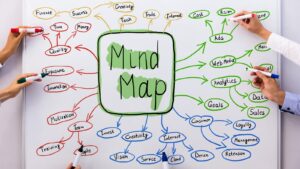by Glenn G. Dahlem, Ph.D.
All educators have long known about testing and pretesting based on using analogies. “Nine is to eighty-one as four is to: a. five, b. sixteen, c. twenty, d. twenty-five.” or “George Washington is to the United States as Simone Bolivar is to: a. France, b. Latin America, c. India, d. Japan.” Obviously, response “b” is the correct answer to both questions; the fact that mathematics and world history are disparate teaching fields has no bearing on this methodology.
In fact, it may be argued that analogies are the gateway to all forms of intellectual discovery, not just a convenient way to measure intellectual capacity or factual knowledge. For example, consider the following art history question: “Hiroshige is most like: a. Rembrandt, b. Georgia O’Keeffe, c. Pablo Picasso, d. Salvador Dali.” The correct answer, based on the artist’s broad choice of subject matter, is “c.” The fact that one possible choice is a woman, will raise the issue of using an improper response to cloud the issue, so perhaps “Frederick Remington” would be a better option. The fact Rembrandt’s first name is omitted also raises the issue of two possible correct responses, as Hiroshige’s first name is also. To avoid these problems, the teacher must make it very clear that it’s artist’s choice of subject matter, not gender or use of first name in the item that’s being sought.
Sometimes deliberate insertion of a potential ambiguity can be used to enforce a teaching point. Consider the following item for use in a modern languages or cultural anthropology lesson. “German is to Austrian as Finnish is to: a. Norwegian, b. English, c. Greek, d. Estonian.” Correct answer is response “d.” While German and Austrian languages are almost the same, and Norway and Finland are both part of the Scandinavian Peninsula, Estonian and Finnish belong to the same linguistic family, yet have some differences.
Analogizing has a place in studying things like current events and social movements and trends too. For example, take the following, based on fields of physical education, recreation or current history. “The popularity of baseball in the Dominican Republic resembles that of basketball in: a. Lithuania, b. Cambodia, c. Latvia, d. Uruguay.” As any American sports fan knows, this is an easy question; the answer is ‘a’. The value of this type of question lies in its relationship to day-to-day events reported in popular news media and the incipient social discussion and discourse that follows. Opportunities to study such avenues for learning often emerge in many school curricula around the world, but sometimes are overlooked by educators.
The major rationale for using analogies to reinforce learning is three-fold. First, they are universally applicable to any subject field or topic. Secondly, they are automatically compatible with the way in which learners comprehend new information. Thirdly, they are intellectually welcome at any stage of the learning process. As pretests, they give teachers quick insight into class levels of existing comprehension. Also, during introduction of a new lesson, they can be great motivation builders. Then during classroom discussion and seat work completion, they provide a definite and interesting rationale for on-going instruction. Lastly, they provide instructors with an already well-understood means for pupil evaluation. It is relatively easy to write analogy-based test items as simple or difficult as a teacher feels are necessary, all the while sticking with a well-understood, precise format.




